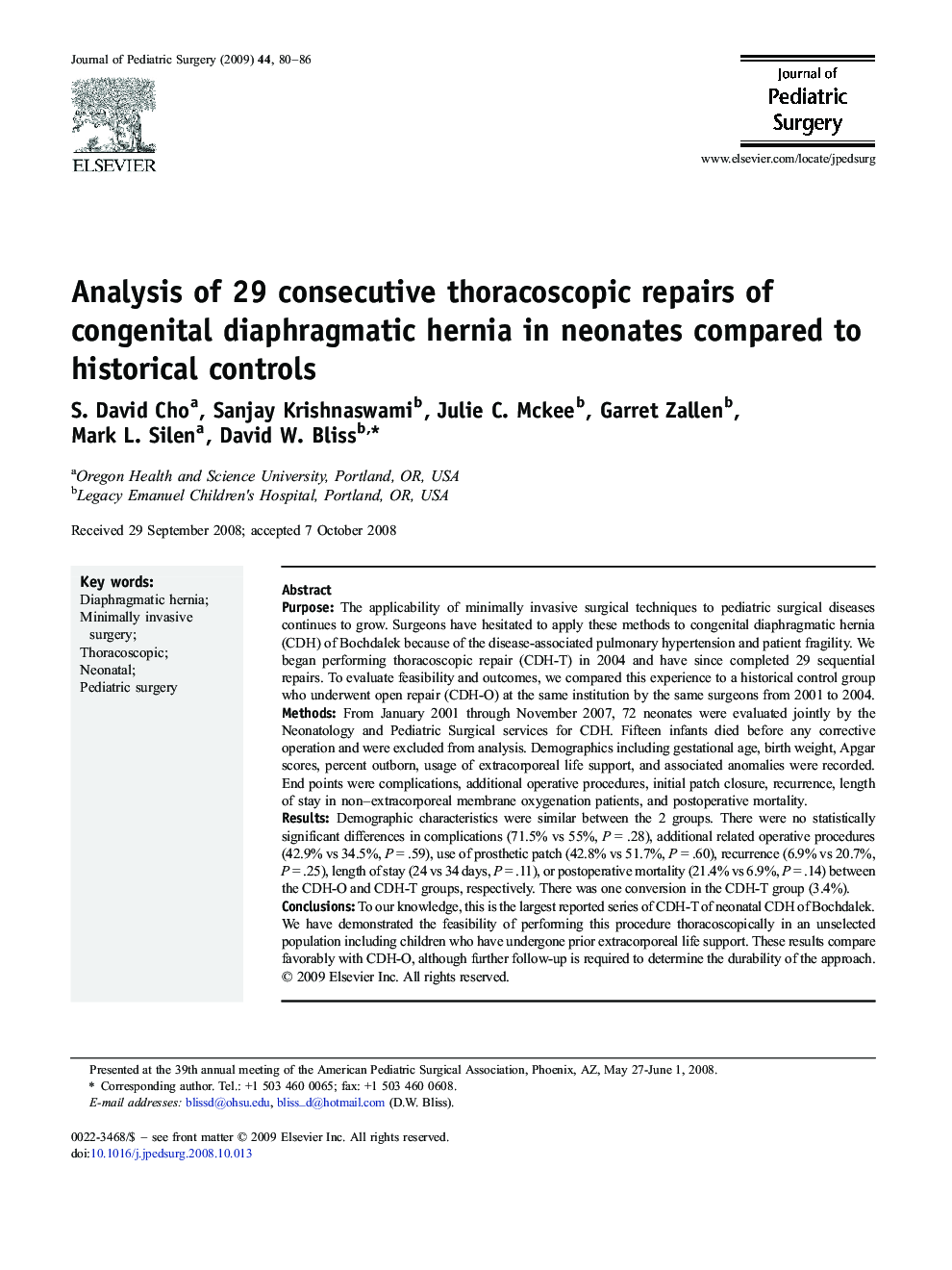| Article ID | Journal | Published Year | Pages | File Type |
|---|---|---|---|---|
| 4159717 | Journal of Pediatric Surgery | 2009 | 7 Pages |
PurposeThe applicability of minimally invasive surgical techniques to pediatric surgical diseases continues to grow. Surgeons have hesitated to apply these methods to congenital diaphragmatic hernia (CDH) of Bochdalek because of the disease-associated pulmonary hypertension and patient fragility. We began performing thoracoscopic repair (CDH-T) in 2004 and have since completed 29 sequential repairs. To evaluate feasibility and outcomes, we compared this experience to a historical control group who underwent open repair (CDH-O) at the same institution by the same surgeons from 2001 to 2004.MethodsFrom January 2001 through November 2007, 72 neonates were evaluated jointly by the Neonatology and Pediatric Surgical services for CDH. Fifteen infants died before any corrective operation and were excluded from analysis. Demographics including gestational age, birth weight, Apgar scores, percent outborn, usage of extracorporeal life support, and associated anomalies were recorded. End points were complications, additional operative procedures, initial patch closure, recurrence, length of stay in non–extracorporeal membrane oxygenation patients, and postoperative mortality.ResultsDemographic characteristics were similar between the 2 groups. There were no statistically significant differences in complications (71.5% vs 55%, P = .28), additional related operative procedures (42.9% vs 34.5%, P = .59), use of prosthetic patch (42.8% vs 51.7%, P = .60), recurrence (6.9% vs 20.7%, P = .25), length of stay (24 vs 34 days, P = .11), or postoperative mortality (21.4% vs 6.9%, P = .14) between the CDH-O and CDH-T groups, respectively. There was one conversion in the CDH-T group (3.4%).ConclusionsTo our knowledge, this is the largest reported series of CDH-T of neonatal CDH of Bochdalek. We have demonstrated the feasibility of performing this procedure thoracoscopically in an unselected population including children who have undergone prior extracorporeal life support. These results compare favorably with CDH-O, although further follow-up is required to determine the durability of the approach.
